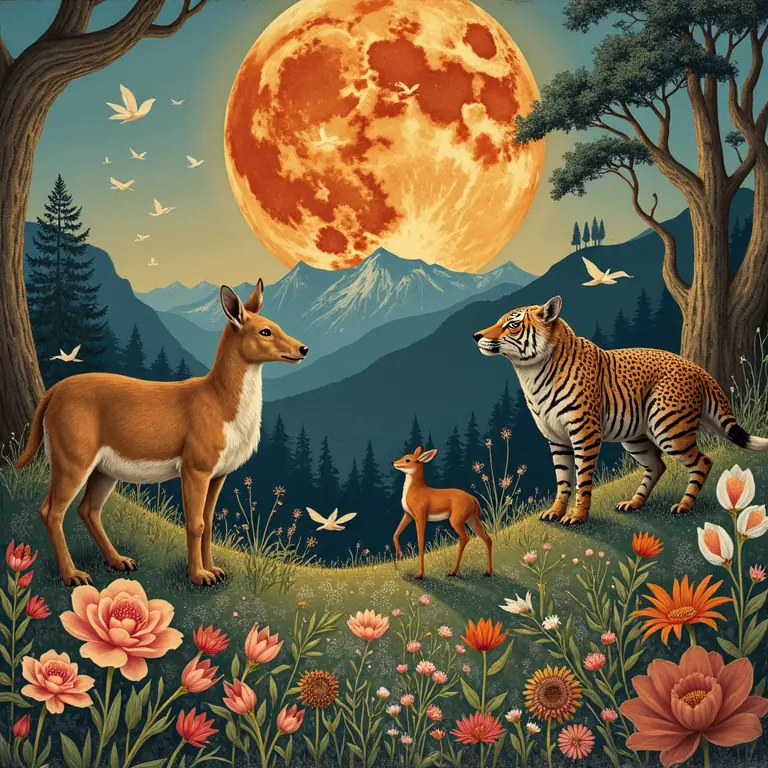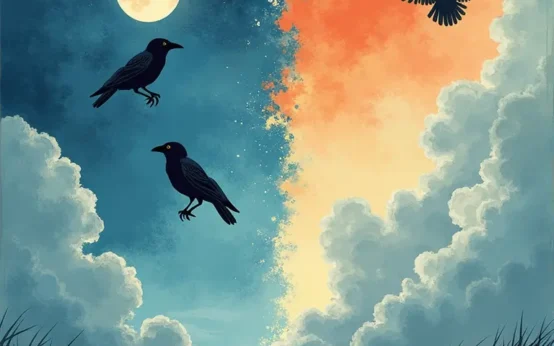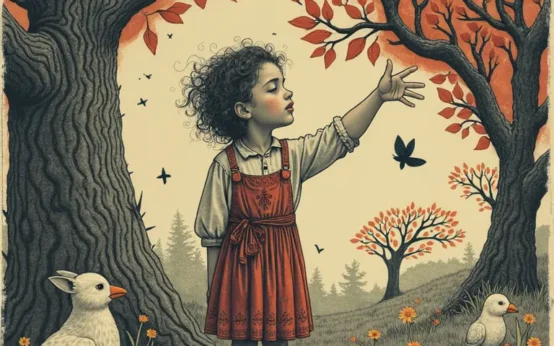For millennia, humans have shared the planet with a stunning array of animal life. Beyond providing sustenance and companionship, animals have consistently featured prominently in our myths, folklore, and, crucially, our superstitions. These beliefs, often deeply ingrained in cultural traditions, ascribe specific meanings – both positive and negative – to the presence, behavior, or characteristics of various creatures. This article delves into the fascinating world of animal superstitions, exploring their historical origins, global variations, and the underlying reasons for their enduring power. We’ll journey from the familiar black cat crossing your path to more obscure beliefs surrounding specific birds, insects, and even marine life, offering a comprehensive look at how animals have become entangled with human fate in the realm of superstition.
The Roots of Animal Superstitions
The origins of animal superstitions are complex and multifaceted, stemming from a blend of practical observation, animistic beliefs, and early attempts to understand the natural world. Before the advent of modern science, animals were often seen as possessing supernatural powers, acting as messengers from the gods, or embodying spiritual forces. Here’s a breakdown of key contributing factors:
- Animism: Early human societies often practiced animism, the belief that all natural things – animals, plants, rocks, even weather phenomena – possess a spirit or soul. This inherent spiritual quality naturally led to animals being imbued with symbolic meaning and potential influence over human affairs.
- Observation & Correlation: Ancient peoples keenly observed animal behavior. If a particular animal’s appearance consistently preceded a specific event (e.g., a flock of birds flying south before a cold winter), a superstitious connection could easily form. Correlation doesn’t equal causation, but in the absence of scientific understanding, such connections were often interpreted as causal.
- Symbolism & Archetypes: Certain animal characteristics – strength, cunning, grace, ferocity – lent themselves to symbolic representation. Animals became archetypes embodying specific qualities, influencing their perceived roles in human destiny. Think of the lion as a symbol of courage or the fox as a symbol of trickery.
- Religious & Mythological Influences: Many religions and mythologies feature animals as sacred beings or powerful deities. These associations often carried over into everyday superstitions. For example, the cow’s sacred status in Hinduism influences beliefs about its welfare and the consequences of harming one.
Common Animal Superstitions Around the World
Felines: Black Cats & Beyond
Perhaps the most well-known animal superstition revolves around black cats. In many Western cultures, a black cat crossing your path is considered bad luck. This belief traces back to the Middle Ages, when black cats were associated with witchcraft and believed to be the familiars of witches. However, this isn’t a universal superstition. In Scotland and Japan, a black cat entering your home is often seen as a sign of prosperity! Other feline superstitions include:
- White Cats: Often associated with good luck, purity, and even spiritual enlightenment.
- Cats Washing Their Face: Believed to foretell the arrival of guests.
- A Cat Sneezing: Considered a sign of good weather.
Canines: Wolves, Dogs & Omens
Dogs, as humankind’s oldest companions, feature heavily in superstitions globally. Wolves, their wild ancestors, often symbolize danger and untamed forces. Seeing a wolf is sometimes considered an omen of impending hardship or death. Domestic dogs, however, often represent loyalty, protection, and good fortune. Specific dog-related beliefs include:
- A Dog Barking at Night: Can be interpreted as a warning of approaching danger or the presence of spirits.
- A Dog Following You: Often seen as a sign of good luck or a protective spirit.
- Dogs Howling at the Moon: Traditionally linked to supernatural events or the spirits of the departed.
Avian Omens: Birds & Their Messages
Birds, with their ability to fly between the earthly and celestial realms, are frequently seen as messengers or omens. Different species carry different meanings:
- Ravens & Crows: Often associated with death, misfortune, and the supernatural, though some cultures view them as intelligent and sacred creatures.
- Owls: Widely regarded as symbols of wisdom, but also linked to death and the spirit world in many cultures.
- Doves: Universally recognized as symbols of peace, love, and purity.
- Swallows: Believed to bring good luck and herald the arrival of spring.
- Eagles: Represent strength, courage, and freedom, often associated with leadership and power.
Reptilian & Amphibian Beliefs: Snakes, Lizards & Frogs
Reptiles and amphibians often evoke strong reactions, leading to a variety of superstitions. Snakes, in particular, are frequently associated with transformation, healing, and danger. The symbolism of snakes is incredibly diverse:

- Snakes Shedding Their Skin: Represents rebirth, renewal, and overcoming obstacles.
- A Snake Crossing Your Path: Can be interpreted as good or bad luck, depending on the culture and the snake’s color.
- Frogs: Often linked to transformation and fertility. Seeing a frog can be considered a good omen, especially in relation to love or financial gain.
- Lizards: In some cultures, lizards are believed to possess protective powers or the ability to ward off evil spirits.
Insect Superstitions: Spiders, Butterflies & Bees
Even the smallest creatures can inspire significant superstition. Spiders, for example, are often associated with creativity, fate, and the supernatural. Butterflies symbolize transformation and rebirth, while bees represent diligence, community, and prosperity.
- Spiders Spinning Webs: Believed to indicate good luck or the arrival of positive changes.
- Butterflies Entering Your Home: Often seen as a sign of a loved one’s spirit visiting.
- Bees Landing on You: Considered a sign of good fortune and prosperity.
Marine Mysteries: Fish, Sharks & Whales
The ocean’s vastness and mystery contribute to a rich tapestry of animal superstitions related to marine life. Fish symbolize abundance, fertility, and good luck in many cultures. Sharks, however, are often viewed as symbols of danger and predatory forces. Whales, with their immense size and intelligence, are frequently revered as sacred beings.
- Seeing a School of Fish: Indicates abundance and good fortune.
- A Shark Sighting: Can be interpreted as a warning of impending danger or conflict.
- Whale Song: Often believed to carry messages from the spirit world.
The Psychological Basis of Superstition
Why do these beliefs persist, even in the face of scientific understanding? Several psychological factors contribute to the enduring power of animal superstitions:
- Control & Certainty: Superstitions offer a sense of control in an uncertain world. Performing a ritual (e.g., avoiding a black cat) can create the illusion of influencing outcomes.
- Cognitive Biases: Confirmation bias – the tendency to seek out information that confirms existing beliefs – reinforces superstitious thinking. We remember instances where a superstitious belief seemed to come true, while conveniently forgetting the times it didn’t.
- Emotional Connection: Animals often evoke strong emotional responses. These emotions can become intertwined with superstitious beliefs, making them more potent and deeply ingrained.
- Cultural Transmission: Superstitions are passed down through generations, becoming ingrained in cultural norms and traditions.
The Modern Relevance of Animal Superstitions
While many may dismiss animal superstitions as relics of the past, they continue to influence behavior and cultural practices in many parts of the world. They also demonstrate the enduring power of storytelling and the human need to find meaning in the natural world. Understanding these beliefs provides insights into the cultural values, historical experiences, and psychological tendencies of different societies.
The study of animal superstitions isn’t just about cataloging bizarre beliefs; it’s about understanding the complex relationship between humans and the animal kingdom. It’s a window into our shared history, our psychological makeup, and our enduring quest to make sense of the world around us. As we continue to learn more about the natural world, it’s important to remember the cultural significance that animals hold for people across the globe, even – and perhaps especially – in the realm of superstition.


 The Surprisingly Consistent Logic of Traditional Weather Proverbs – Folklore’s Forecasts & Atmospheric Science
The Surprisingly Consistent Logic of Traditional Weather Proverbs – Folklore’s Forecasts & Atmospheric Science  The Unexpectedly Detailed World of Antique Keys: Locks, Lore & Lost Stories
The Unexpectedly Detailed World of Antique Keys: Locks, Lore & Lost Stories  The Unexpected Origins of Nursery Rhymes: Tales of History & Hidden Meanings
The Unexpected Origins of Nursery Rhymes: Tales of History & Hidden Meanings  The Forgotten Science of Weather Lore: Predicting Skies with Proverbs & Signs
The Forgotten Science of Weather Lore: Predicting Skies with Proverbs & Signs